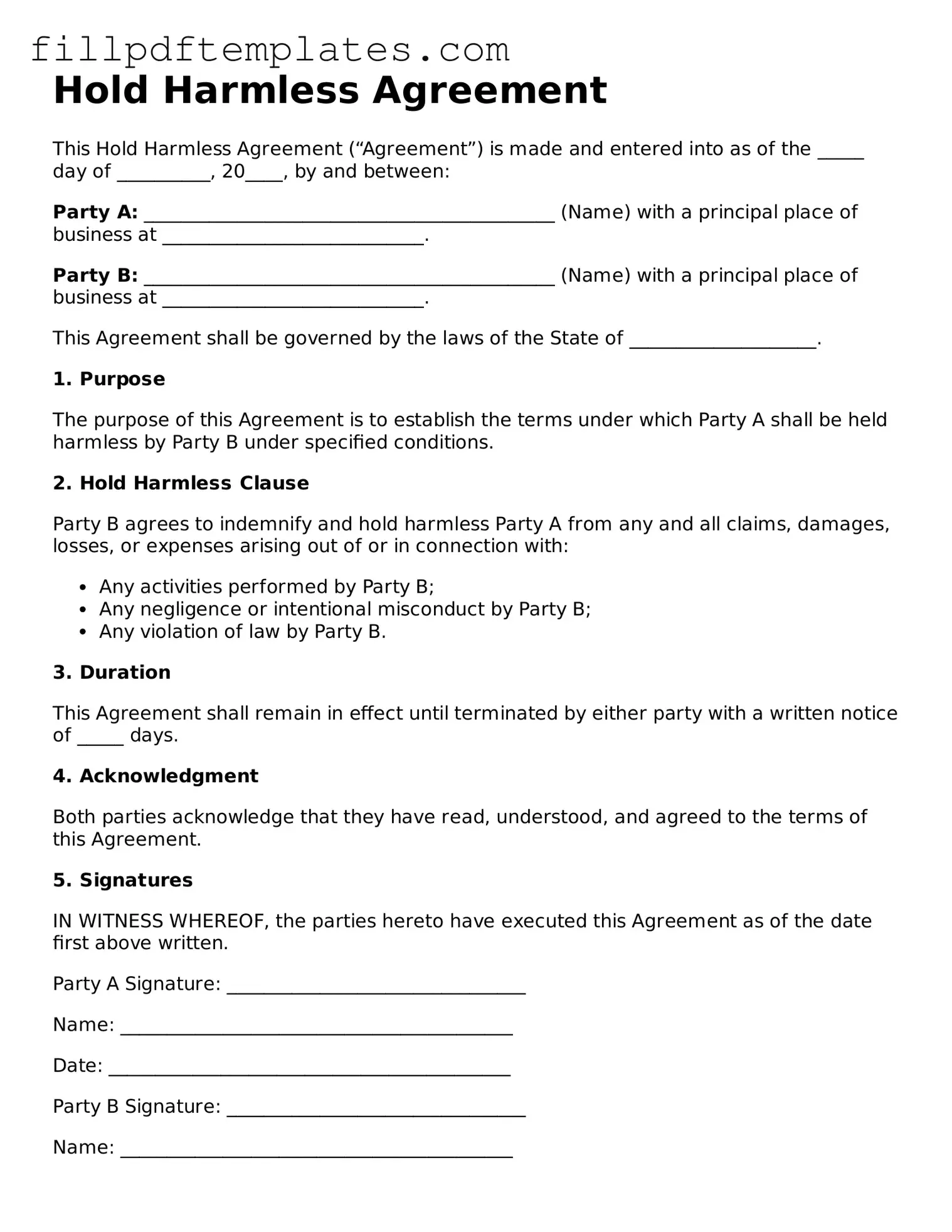Hold Harmless Agreement
This Hold Harmless Agreement (“Agreement”) is made and entered into as of the _____ day of __________, 20____, by and between:
Party A: ____________________________________________ (Name) with a principal place of business at ____________________________.
Party B: ____________________________________________ (Name) with a principal place of business at ____________________________.
This Agreement shall be governed by the laws of the State of ____________________.
1. Purpose
The purpose of this Agreement is to establish the terms under which Party A shall be held harmless by Party B under specified conditions.
2. Hold Harmless Clause
Party B agrees to indemnify and hold harmless Party A from any and all claims, damages, losses, or expenses arising out of or in connection with:
- Any activities performed by Party B;
- Any negligence or intentional misconduct by Party B;
- Any violation of law by Party B.
3. Duration
This Agreement shall remain in effect until terminated by either party with a written notice of _____ days.
4. Acknowledgment
Both parties acknowledge that they have read, understood, and agreed to the terms of this Agreement.
5. Signatures
IN WITNESS WHEREOF, the parties hereto have executed this Agreement as of the date first above written.
Party A Signature: ________________________________
Name: __________________________________________
Date: ___________________________________________
Party B Signature: ________________________________
Name: __________________________________________
Date: ___________________________________________
